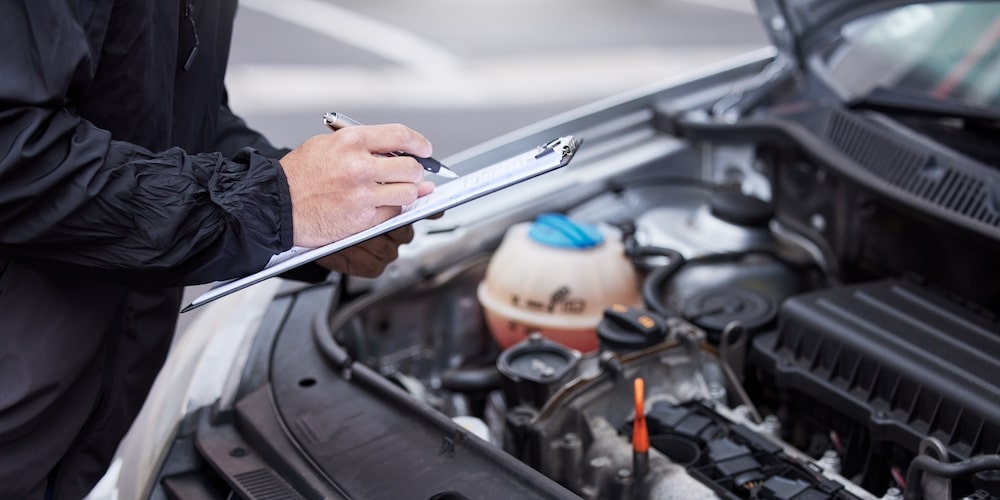Car seats and booster seats are required by law when you have children of a certain age, height, and weight in your vehicle. While it’s important to follow these laws, of even greater importance is protecting your children by using an appropriate child restraint system. Child safety seats help reduce the chance of serious injury if you’re involved in a motor vehicle accident.
The Illinois Secretary of State provides guidelines on these safety devices, and every parent and caregiver should know them to ensure they’re adhering to safety standards.
844SeeMike Personal Injury Lawyers is a leading personal injury law firm in Chicago that represents victims in car accidents. We’re committed to spreading awareness of car seat laws to protect all children in the community. In this blog post, we discuss what you need to know about the Illinois accident report timeframe, how waiting could impact your case, and how an Illinois car wreck attorney can help you in the aftermath.
Understanding Illinois Car Seat Laws and the Child Passenger Protection Act
It can be confusing to discern between fact and fiction when it comes to car seat weight requirements in Illinois. Some children weighing more than others in their age group may not need to use a car seat, but rather, a booster seat. Illinois child seat height is also a concern, in addition to the weight limit.
As for the law, the Illinois Child Passenger Protection Act, effective since July 1, 1983, mandates that children under 8 years old be properly secured in a restraint system for children. Since January 1, 2019, the Act was updated to require that children under the age of two need to be put in a rear-facing car seat except the child’s weight is 40 pounds or more or their height is 40 inches or more.
A restraint system is a broad definition for car seats, including rear-facing and forward-facing car seats, booster seats, and the built-in seat belts attached to the vehicle itself. Since the language of the law is complex, it’s essential for parents to familiarize themselves with the proper guidelines.
The Importance of Compliance for Child Passenger Safety
Compliance with car seat laws isn’t just about avoiding penalties and fines, though it’s certainly a good reason to ensure you have your children properly secured.
Avoiding Criminal Offenses
Not having your child in an appropriate car seat will result in a $75 fine for a first offense, and you may be eligible for court supervision. Offenders can avoid a conviction by providing documented proof of owning a child car seat or booster seat that fits the requirements. Additionally, they need to complete an instructional course on installation. A second offense results in a $200 fine.
Reduced Risk for Injuries or Death
Getting in trouble with the law through criminal charges isn’t something any parent or guardian wants. However, the biggest reason to use a child restraint system is to protect your little ones from suffering painful or permanent injuries or even death.
What is most frightening of all is that a large number of parents and caregivers may have a child safety seat in place in their vehicle, but not have it properly secured. It may also not meet the needs of their child. For these reasons, it’s smart to use the Illinois Keep Me in a Safe Seat Program, which provides child safety seat inspections throughout the state. You can get valuable peace of mind by ensuring your child is using the right car seat to protect them in the event of a crash.
Illinois Car Seat Laws: Height and Weight Requirements
The guidelines for the state are set by recommended ages. Parents should consider their children’s ages relative to their height and weight to make the right car seat choice.
Rear-Facing Car Seats for Newborns Through 2 Years of Age
All children under the age of two must be in a rear-facing seat, with the only exception being if they weigh over 40 pounds or are a minimum of 40 inches in height. Rear-facing car seats should be used as long as possible for the best protection. If you already have your child in this type of car seat, make sure that you review the manual that came with it to make sure it’s suitable for your child’s age, height, and weight.
Additionally, a rear-facing car seat should never be put in the front seat. For a proper fit, put the chest clip at your child’s armpit level and the harness straps below your child’s shoulders.
Children Ages 2 to 4 Should Also Face to the Rear
If you have a child in this age bracket, keep their car seat facing rearward as long as possible. At this age, they may outgrow their original car seat when they reach 40 pounds in weight or 40 inches in height. At that point, you can move them into a forward-facing car seat. It should have a five-point harness system.
Children Ages 4 to 8 Use Forward-Facing Safety Seat
By this age bracket, children are usually at the minimum height and weight requirements for a forward-facing seat until they’re big enough for a booster seat. Forward-facing car seats position a child so that the lap belt and shoulder belt of the seat belt falls across a child’s shoulders and not across their neck. The lap belt portion of the seat belt should fit snugly across their hips and upper thighs rather than their stomach.
What About Children Between Ages 8 and 13?
It’s probably not what your tween child may want to hear if they haven’t had a big growth spurt yet, but they should still sit in their booster seat until your car’s seat belts fall across the shoulders and lap properly. If they’re capable of sitting in the vehicle seat with the shoulder belt and lap belt fitting accordingly, they can use the safety belt.
Benefits of Proper Use of Child Safety Restraint Systems
Most kids will fall under the guidance of age limits, though the most important aspect of child passenger safety is keeping them safe in the event of a car crash. While the guidelines on car seats might seem a bit overwhelming at first, these safety systems can save your children’s lives. Ultimately, this is the biggest benefit of using a safety seat.
They will be less likely to suffer severe injuries, though parents and guardians must make sure they’re installed properly. Take advantage of programs that help you make sure it’s properly installed. Use a rear-facing seat until your child outgrows it, and when they do, upgrade your child passenger safety seat to one that faces forward, ensuring the harness straps are in the right place.
How a Chicago Car Accident Lawyer Can Help If Your Child Is Hurt in a Motor Vehicle Crash
Even when you take the proper precautions, you and your child may be hurt in a vehicle accident. While child passenger safety metrics help tremendously, you may need help holding the other driver accountable for their negligent behavior. Contact 844SeeMike Personal Injury Lawyers to schedule a free initial consultation with a car wreck lawyer in Illinois who can provide legal support during this difficult time.






